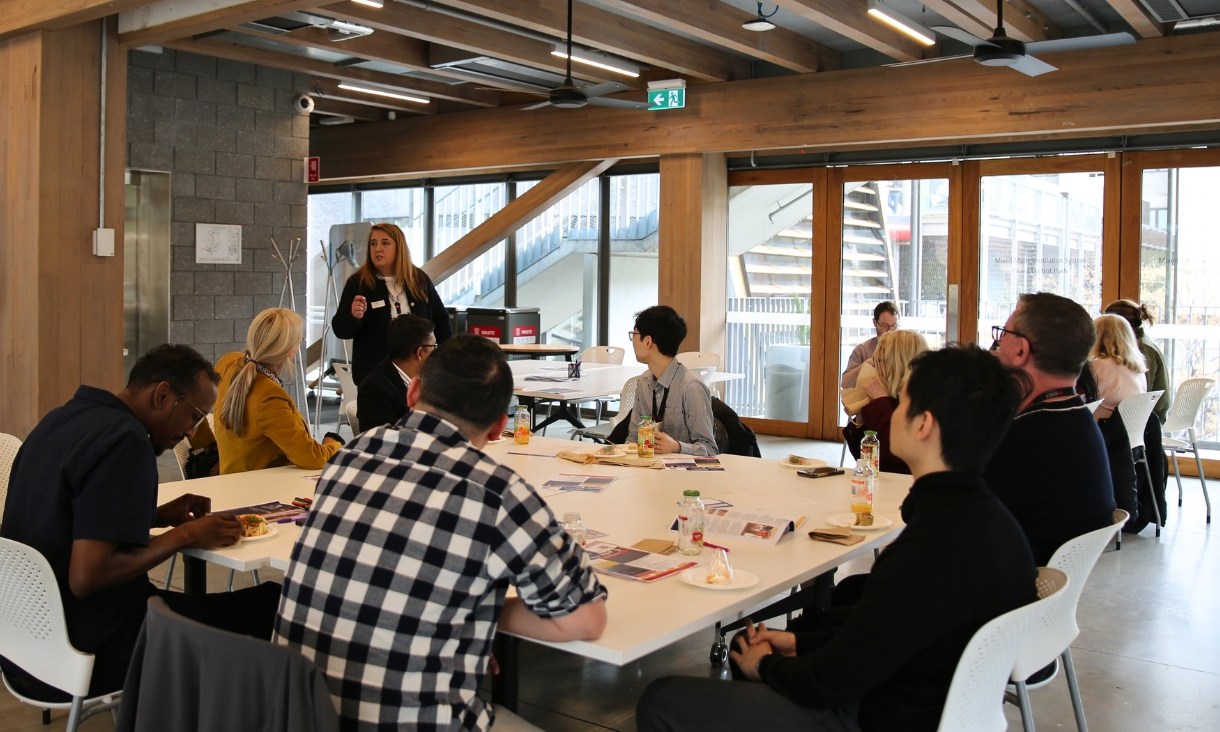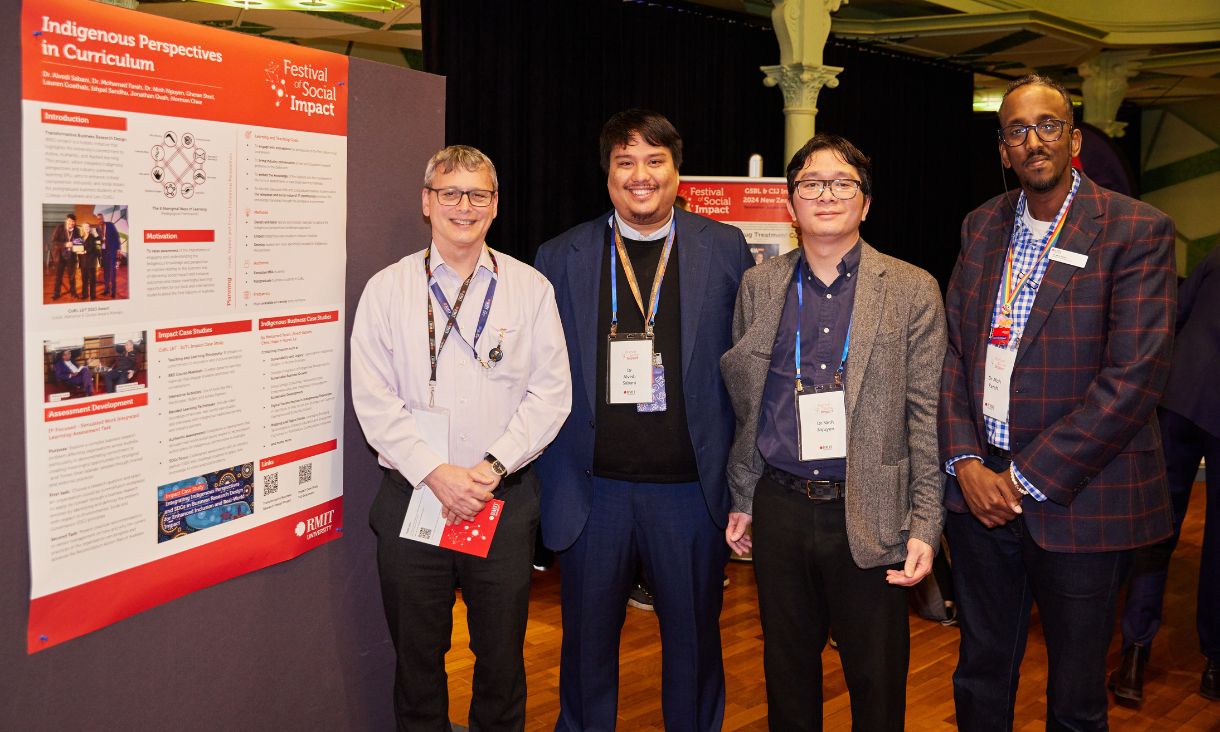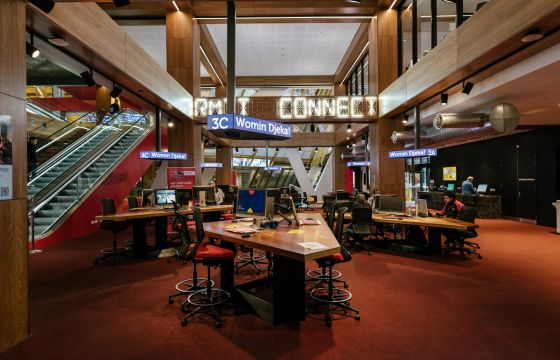Designing student engagement opportunities with industry in education is a routine and necessary practice in current pedagogical design. However, the RMIT Aerospace and Aviation programs has taken this approach and scaffolded it around the ARCS model of motivation creating a unique lens with which to view the planning and engagement of students with industry.
Dr Chrystal Zhang and Dr Akbar Khatibi designed the monthly aviation/aerospace masterclass series launched in May 2022 to foster, inspire and sustain students’ motivation.
She explains that motivation is tied closely to student learning achievement and is often considered one of the main factors that keep students learning.
One commonly used motivational design model is the ARCS model. To inspire and sustain motivation, the instructor or instructional materials need to:
- catch and sustain students’ attention
- state why the students need to learn the content
- make students believe that they can succeed if they exert effort
- help students feel a sense of reward and pride (Keller, 1987).
What is the ARCS model?
The ARCS model is one of many motivational theories, however Keller’s theory specifically focusses on the four key elements of the learning process that both encourages and sustains a learner’s motivation. So how does it work?
The 4 elements to the ARCS model are: attention, relevance, confidence and satisfaction
Combined into a pedagogical approach that overlays the ARCS elements, the learning experience and assessment can become engaging and inspiring for students. What do the ARCS mean in an educational setting? These can be adapted depending on the context, discipline or environment. Here are some examples.
Attention – ensuring you have captured your students’ attention is paramount these days. You can do this by presenting real-world examples (remember to capture attention without being distracting). You can try incorporating humour if appropriate and you can promote participation through hands on practice and opportunities. You can also keep attention by being a bit thought provoking with your content and encourage questions and discussion and ensure you use a range of media and delivery methods.
Relevance – This is vital to the learner the of 21st century. Include examples or activities that demonstrate relevance and currency of the learning and content and how it will be useful in the future. Create relatable examples that the audience can make a connection to, then expand those to stretch their learning experience and include reflection opportunities.
Confidence - Building confidence in students requires setting clear expectations for success. You can do this by providing opportunities to practice skills, knowledge and judgement. This ensures you provide a chance for students to adapt and adjust through regular feedback and check ins. Giving flexibility and freedom allows students to take ownership of choices and decisions and this has profound impacts on confidence. Paramount to confidence is avoiding serious setback so provide an ‘easy to complex’ scaffolding approach with the content and learning so challenges can be overcome, and students can progress and, most importantly, see and acknowledge their own progress.
Satisfaction - Providing realistic and rewarding opportunities for students to apply their skills fosters a sense of satisfaction and this will keep them wanting to engage. Don’t be tempted by using carrots as rewards, or conversely using a punitive approach. Foster a culture of pride and self-satisfaction. Remember to continually reinforce the new skills acquired and celebrate these achievements often and ensure standards and expectations are consistent across the cohort so a fair and level playing field is created for all to achieve and thrive.
How the ARCS model was used as a pedagogical approach to aviation/aerospace
Taking a step back and encouraging students to see the bigger picture, the Masterclasses provide Relevant and Attention-grabbing opportunities.
As Chrystal explains, “Although the ARCS model has been applied at individual course levels, we could see it could be utilised at program and discipline levels too.”
In light of the above model, the monthly aviation/aerospace masterclass series was initiated, inviting global aviation/aerospace executives and senior academics to share their knowledge, insight, and reflection on current and relevant topics of our students’ interest. The two sessions held in May and June 2022 attracted 100 plus aviation/aerospace students respectively and tens of aviation/aerospace academia across RMIT campuses (Melbourne, Hong Kong, Singapore, and Vietnam).
Applying the ARCS model at a program level adds a level of complexity, as the aim is to cement the program learning outcomes with industry context, relevance and use the notion of attention, relevance, confidence and satisfaction in a slightly different way as to course level application.
In course level application ‘confidence’ and ‘satisfaction’ check-ins might take the form of feedback and building progressive levels of confidence through growing knowledge and application. However, in these program level masterclasses confidence and satisfaction are derived from the significant and topical attention grabbing and industry relevant content.
Chrystal explains that COVID has had a significant impact on the global aviation industry. With the dramatic decrease of air travel and redundancy of employment, our students were unsure of their future careers in the industry, which could undermine their motivation of learning.
“After graduating, it’s a fundamental question for the students, whether they see the prospect of future employment.”
The masterclasses with industry experts help instil confidence in the industry. Students will become more confident because they can aspire to have a greater career.
The confidence and satisfaction derived from such industry exposure opportunities is further enhanced through the masterclass’s interweaving industry relevant current events into the content which creates a level of interest and engagement represented by the large volumes of students from across the globe to attend the events.
“My view is to try to capture those kinds of topics and get the right person to speak to resonate with the students”, Chrystal says.
She explains the aim is to create a showcase. These types of current events, incidents and activities are part of the industry and highlight the diversity and breath of experiences to capture and sustain student’s interest. Whilst not positive, events like aviation accidents and impacts by COVID-19 are a reflective learning opportunity for students.,
Some of the challenging topics the masterclasses have broached include accident investigations along with the impacts of the war in Ukraine on global aviation. Flights between Europe and Asia, including to some extent Australia, were severely affected by the closure of airspace in the war zone. The duration of a flight could be extended by up to 7 hours due to the rerouting.
Looking back to the ARCS model and capturing the sustained and engaged attention of students opened the eyes of the students. Chrystal says that students learned to broaden their analysis of the impacts through these topics.
“If you think from just a passenger perspective it is just a delay of a few hours and it's extending the duration, but it affects the whole supply chain of aviation operation: from airport slot management, airline scheduling, flight crew rostering and scheduling, aircraft utilisation, baggage handling and travellers’ wellbeing”.
This exposure helps students gain a systemic and comprehensive understanding of the global industry that they aspire to work in.
“Anything that happens over there will have an impact on us or on somewhere else because you fly from one place to another,” Chrystal explains.
“I try to bring in industry or experienced academics from different international locations to demonstrate this international context.”
Chrystal highlighted another controversial current event in the industry set to feature in a masterclass: the recent newsworthy story of two Air France pilots getting into a fight while on duty. This event serves as a complex case study that will no doubt have students and academics alike flocking to attend and be involved in the unpacking of impacts. The case opens a range of topical issues such as behavioural expectations, safety protocols, cockpit and cabin crew responsibilities.
Chrystal says this calls into question issues of “pilot professionalism or what we call airmanship and safety consequences”. It’s an extreme example, but it talks to the importance of teamwork, resolution of conflict, flight deck competencies, and taking accountability of one's behaviour.
These issues can be teased out in a masterclass to help students understand how critical professionalism, teamwork, emotional intelligence capabilities are in the industry. Each of these lessons help to build the students confidence through understanding the environment they are entering.
Part of the motivation for students is formed through the opportunity to understand the complexities and opportunities within the industry. Chrystal says the masterclasses are used as conduit for discussion of transferrable and “fundamental knowledge, skills and competencies that you need to develop during your study that help consolidate the students’ transferrable skills to be prepared for career changes."
The speakers at the masterclasses can articulate and showcase the importance of these fundamental skills when you choose career changes within the industry.
How the use of the ARCS model was successful in students’ learning
Taking time to reflect on the success and feedback from the students, Chrystal describes the series as having a positive impact on students learning in the following ways:
- It allows our students to engage with the global aviation/aerospace industry to connect with industry professionals.
- The topic and discussion address the key issues/happening that profoundly impact the industry that our students resonate with.
- The speakers avail themselves as a role model, motivating our students to explore further.
- It provides a forum to encourage our students to reflect on their learning (reflective and critical thinking), apply their knowledge and competencies to attempt authentic problems and challenge their thinking.
- It facilitates to enhance our students’ self-awareness and agency of career goals and shape them to develop a global perspective pursuing to be active global ethical citizens.’
Adopting a program level masterclass series has added many new and inspiring dimensions to the student experience. Chrystal plans to continue to use the ARCS model. Particularly through integrating the masterclass experience with course level learning to build confidence and satisfaction. The impact on engagement and motivation through an ARCS model is undeniable and taps into the very human need to understand purpose, relevance and impact. This case study certainly provides a benchmark for implementing inspired learning.
Story by: Priscilla-Anne Green, Senior Advisor – Quality Workforce Capability in the Centre for Academic Quality and Enhancement at RMIT University







